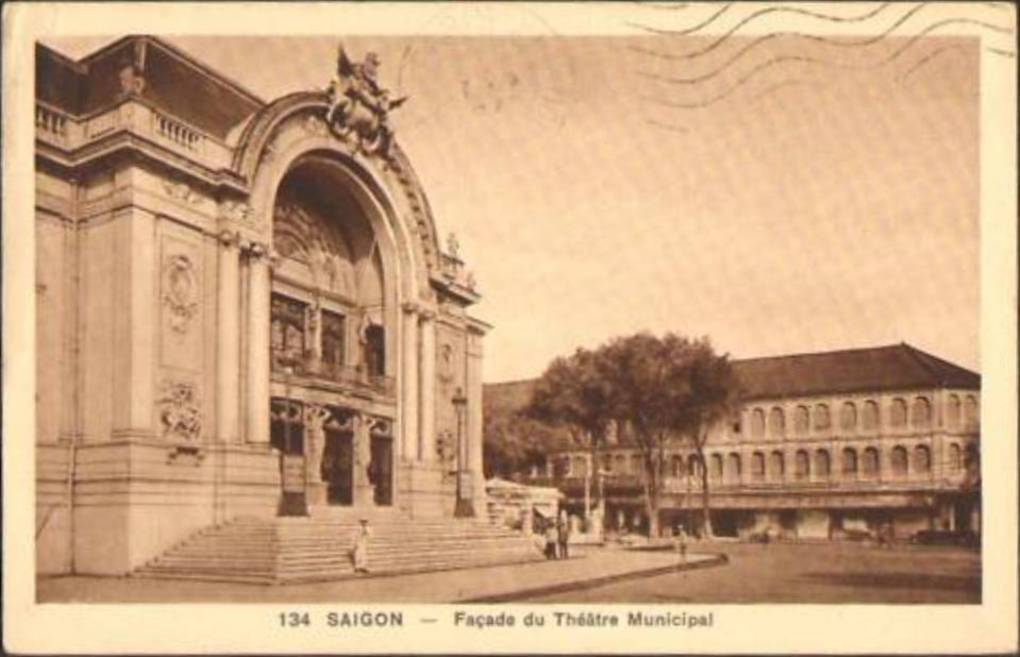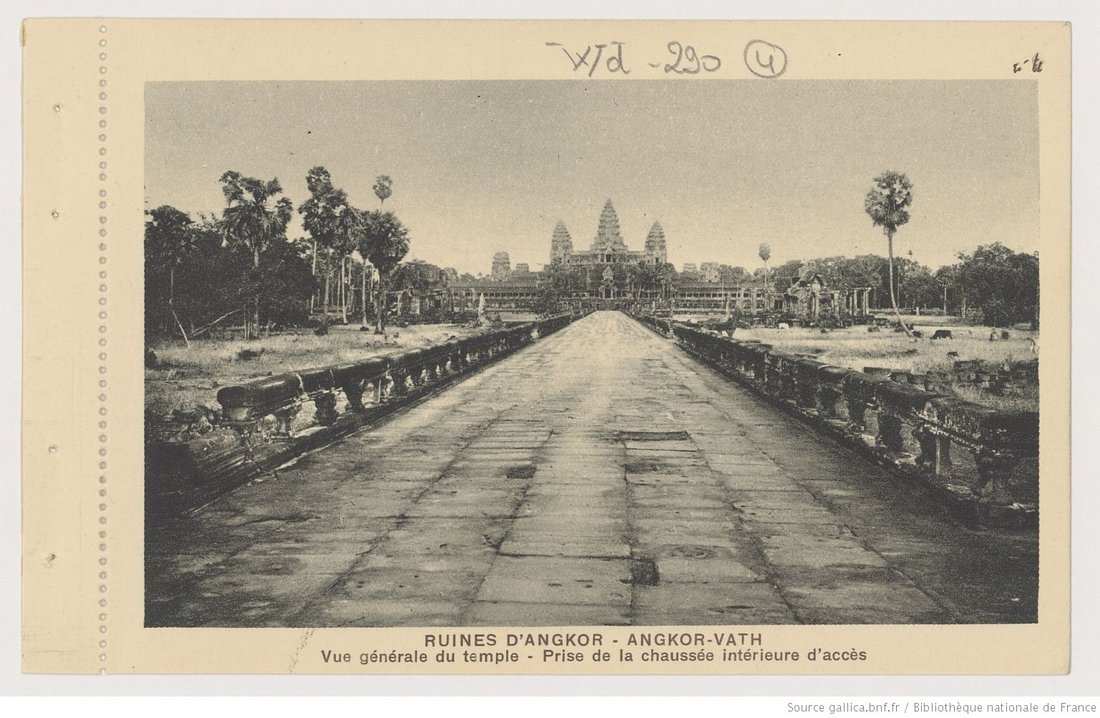
NADAL Fernand (EN)
Biographical Article
Fernand Nadal was a photographer who practiced in Saigon in the years 1920-1940. He was born in Algeria (http://photographesenoutremerasie.blogspot.com/2009/11/nadal-fernand.html). Limited information is available about his life. Documents concerning Nadal and photos from his studio can be found at the Archives Nationales d’Outre-Mer in Aix-en-Provence, the Bibliothèque nationale de France, Archive Center 1 in Hanoi, and Archive Center 2 in Ho Chi Minh City. It is known that Nadal created a store with a portrait studio in 1922 in Saigon at 120 rue Catinat. In the 1930s, he worked for the General Government of Indochina; he exhibited his photographs at the colonial exhibitions in Marseilles in 1922 and Paris in 1931 and at the Salon de la France d'Outre-Mer in 1935. His photos were also published in Le Monde colonial illustré from 1928 to 1935. The last mention of Nadal in the archives dates from 1939-1940; he purchased German Reflex-Korelle 6x6 cameras from the Franz Kochmann House in Dresden (Vietnam, Archive Center 1 in Hanoi, Stamp Domain Registration Fund No. 12061).
In 1922, Nadal appeared in the General Directory of Indochina. The advertisement describes a “portrait studio, sale of photographic gear and products” (Indochine française, 1922, p. 145). Nadal made both artistic and industrial photos and also sold paintings and articles for painting (Fonds Gouvernement de la Cochinchine L32 n19834). In 1925, the Annuaire général de l’Indochine indicates for Fernand Nadal: “photographer, portrait studio. Sale of articles and photographic products, postcards, Albums of Cochinchina, Cambodia, the ruins of Angkor, 118-120, rue Catinat”. (Indochine française, 1925, p. 88) His establishment therefore seems to have grown in the intervening three years. Nadal's last appearance dates from November 1945. A photograph of Catinat street by Claude Le Ray shows on the foreground Photo Nadal's large storefront (Fonds Indochine, ECPAD).


The Collection
In 1924, the photo studio Nadal “had a very large first-rate photographic documentation, concerning the southern part of the Indochinese union. 2000 photos were published in postcards or photogravure albums” (Vietnam, Archive Center 2 Ho Chi Minh City, Cochinchina Government Fund, L32 no 19834). Nadal printed many postcards of Cochinchina and Cambodia, including a booklet of 10 detachable postcards of Cochinchina, genre and local scenes, and a booklet of 24 black-and-white detachable postcards of the Ruins of Angkor and Cochinchina. Photos were printed in sepia and feature Vietnamese children, a feature which amplifyies their exoticism (for example, a naked child in the Cochinchina 1 photo). The Ruines d'Angkor notebook contains only black and white photos with shots of monuments without people, except for the last card, which shows Cambodian dancers. Another notebook of 10 postcards on the Mnong population with black and white photos is now part of the collection of the Musée du Quai Branly.
Nadal also published photographic albums on Angkor, Saigon, Saigon-Cholon, the riches of Cochinchina, and rubber plantations. Two of these albums, Ruines d’Angkor and Saigon, are kept at the Archives Nationales d’Outre-Mer. The album Rubber Plantation in Benco, Cochinchina, is conserved at the Bibliothèque nationale de France. Books and postcards were generally printed by Braun & Cie. The Saigon book contains many photos of monuments and official buildings.
In addition to albums and postcards, Nadal's photos were published in Le Monde colonial illustré in May 1928, November 1928, February 1930, July 1930, November 1930, January 1931, February 1931, July 1931, September 1931, July 1932, and April 1935. In April 1930, he photographed the visit to Indochina of the King and Queen of Siam, Rama VII and Rambai Barni, for the General Government of Indochina. 66 of these photographs are kept in the Archives Nationales d’Outre-Mer. Nadal collaborated a great deal with the Indochinese government.
He participated in the colonial exhibitions of 1922 in Marseille and 1931 in Paris. In Le Monde colonial illustré, a photo of Nadal from the Grall hospital in Saigon was published in 1922 and was also used for the colonial exhibition in Marseille. It was primarily Nadal who provided the photos on Cochinchina for the Colonial Exhibition of 1931 (Vietnam, Archive Center 2 Ho Chi Minh City, Cochinchina Government Fund L32 no 27861). He signed a contract with the General Government of Indochina in 1929 to supply the Cochinchinese section of the exhibition with color and black and white photos (Fonds Gouvernement de la Cochinchine, L32 no 27861). His program was specific, with a preferred format of 18x24 cm for photos. 121 photos made by Nadal were rejected by Eutrope, the delegate of Cochinchina to the colonial exhibition, for not showing people posing in front of the buildings. According to Eutrope, the shots were taken from too far away and the photos needed to “include figures”. In a note to Mr. Nadal dated June 16, 1930, Eutrope added “it seems impossible to make Nadal admit that Cochinchina is not a deserted country” (Fonds Gouvernement de la Cochinchine, L32 no 27861). These remarks are backed up by the photo Ruines D'Angkor 2, in which the building is photographed from afar, without any human presence. Despite these critiques, 500 shots were accepted, and he remained the most important supplier of photos for Cochinchina.
Eventually, Nadal organised an amateur photography contest in 1937. This contest was very popular; in 1937, 220 photos from this competition were exhibited by the Indochina Tourist Office exhibited in their gallery (Demay A., 2011, p. 232).
Related articles
Collection / collection d'une personne

Personne / personne

